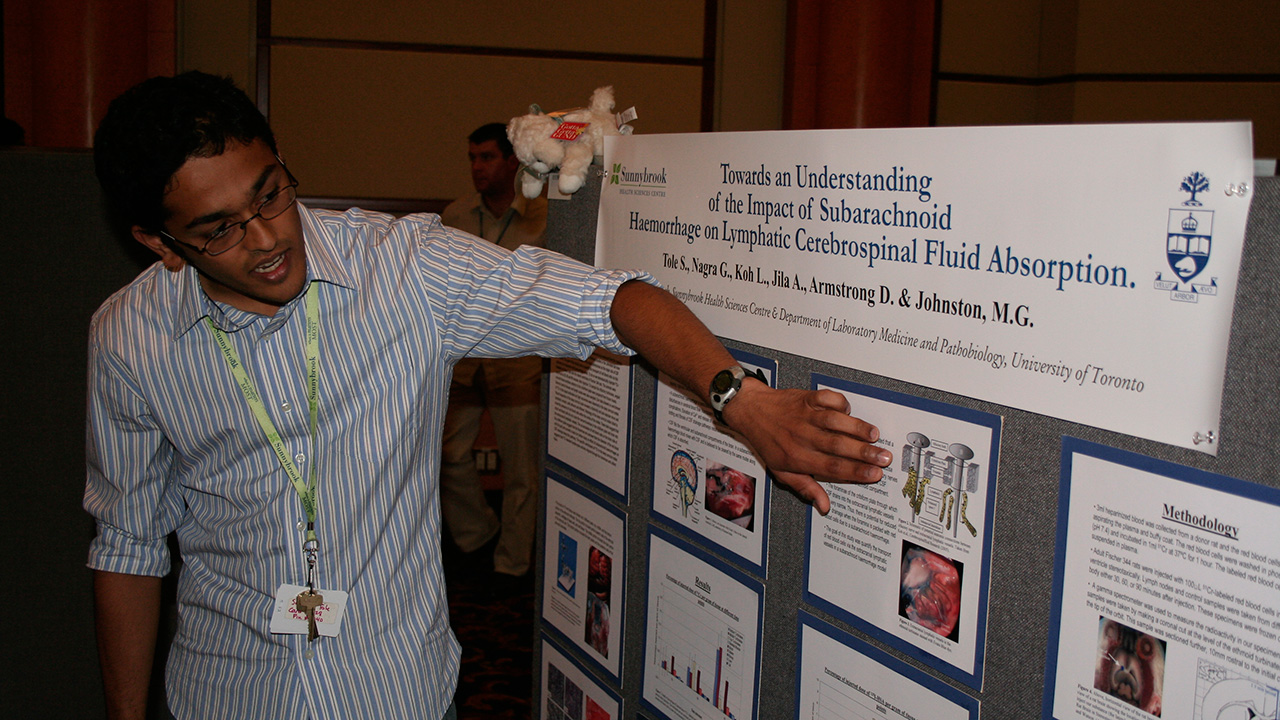Summer of Science at Sunnybrook Research Institute
By Jim Oldfield
Sunnybrook Research Institute (SRI) hosted its annual Best Summer Research Project Competition on August 23, 2006. It was the pinnacle of 12 weeks of intense collaboration between students and faculty. Twenty-six students presented posters detailing their research results, and judges chose four winners, one from each of SRI’s four research disciplines: molecular and cellular biology, clinical integrative biology, imaging and clinical epidemiology.
The posters were so good that three of the judges suggested there be multiple winners within each discipline, but, following event rules, there could be only one winner per discipline. Dr. Michael Julius, vice-president of research at Sunnybrook, presented the awards. Julius says, “The difficulty judges had making a decision validates how good the science we’re executing each summer is.”
Soumitra Tole, who won for best poster in the discipline of clinical integrative biology, agrees. “I thought there were a number of magnificent posters here,” he says. Tole said that while it was nice to be appreciated, he was more pleased about having the chance to do valuable research in a short time with a top-quality lab. “This was the best lab I’ve ever been in. The people were so helpful; it wasn’t even like going to work. And the facilities here are outstanding.”
Tole developed his project, Towards an understanding of the impact of subarachnoid haemorrhage on lymphatic cerebrospinal fluid absorption, in the lab of senior scientist Miles Johnston. Other award winners (supervisors in brackets) were:
- Rachel Bigenwald (Ellen Warner), clinical epidemiology, Is mammography adequate for screening BRCA mutation carriers with low breast density?
- Nikita Reznik (Peter Burns), imaging, Using ultrasound and microbubbles to deliver drugs into cells: an in vivo study.
- Angela Jia (Jorge Filmus), molecular and cellular biology, Glypican-3 inhibits hedgehog signaling in mouse embryos.
Award winners receive $500, individualized plaques and their names on a plaque that will be displayed in the research institute. All students presenting a poster receive a certificate of participation from event coordinator Terrie Banks.
Despite having a dream the night before that no screens were available for mounting posters, Banks produced a seamless event, one that continues to benefit students and the institute reliably year after year. Says Julius, “While it’s a privilege for students to work with faculty, faculty find it important for their neural firings to interact with students.”
PDF / View full media release »





